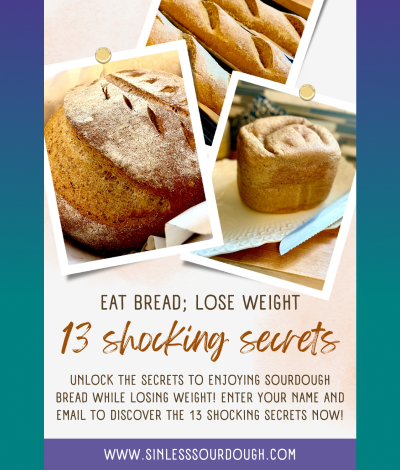Secrets to Pairing Alcohol-Free White Wines with Seafood Delights
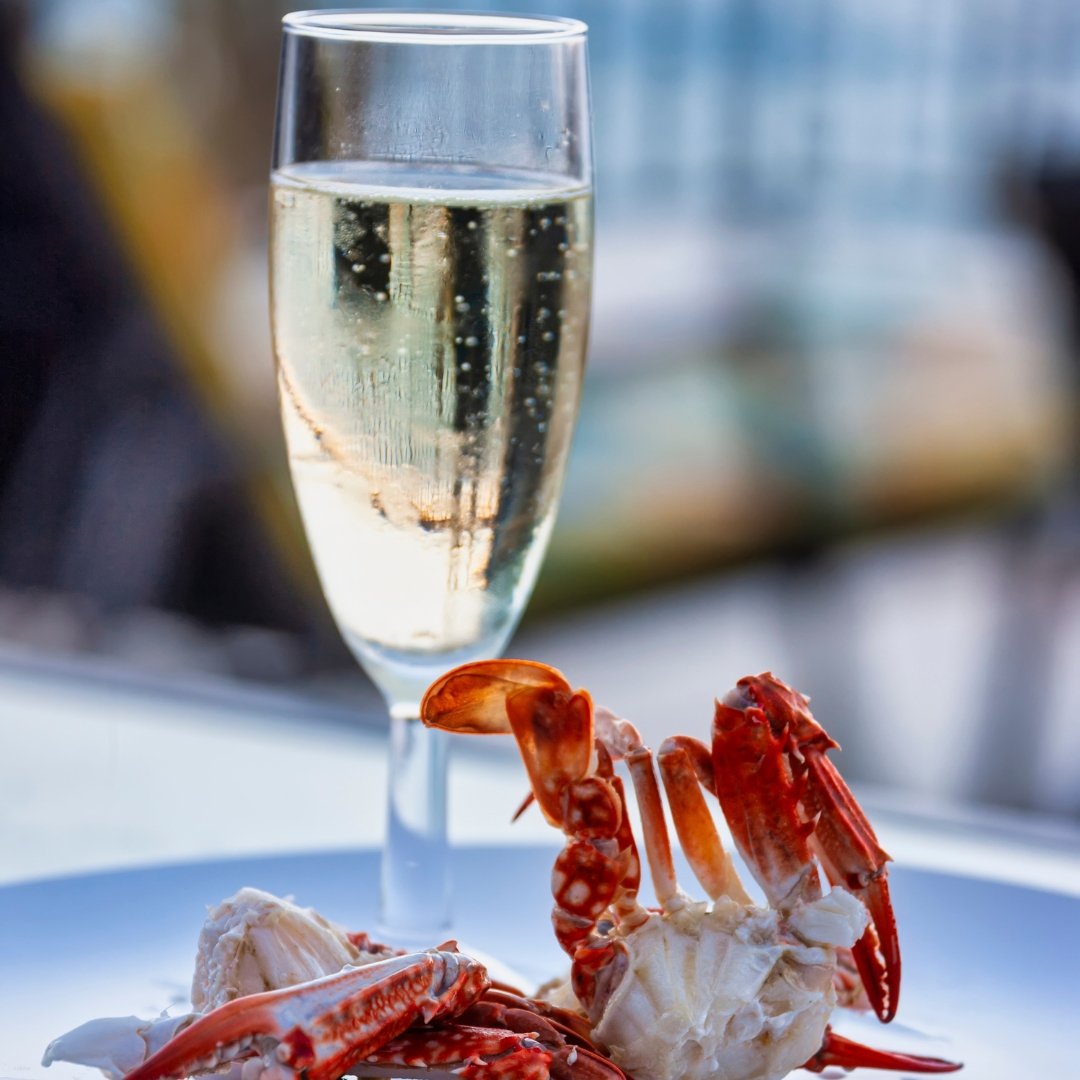
Seafood-friendly non-alcoholic white wine is a subject dear to my heart.
As someone with a family history of heart disease, I’ve become deeply invested in understanding the intricate relationship between diet, cardiovascular health, and food choices.
In this post, we’ll explore the fascinating world of seafood-friendly alcohol-free white wines and their place in a heart-healthy diet. But we’re not stopping there – we’ll also delve into the latest scientific research that’s reshaping our understanding of cholesterol, the benefits of ketogenic and low-carb diets, and the crucial role of omega-3 fatty acids found in certain fish.
10 KEY TAKEAWAYS:
- Non-alcoholic white wines offer diverse flavor profiles suitable for various fish pairings.
- Light, fruity non-alcoholic whites pair well with delicate fish like sole and tilapia.
- Off-dry non-alcoholic whites complement salmon and tuna dishes.
- Fuller-bodied non-alcoholic whites match richer seafood like lobster and crab.
- Non-alcoholic sparkling whites are excellent alternatives for pairing with oysters and raw seafood.
- Consider flavor profile, quality, acidity, and sugar content when choosing non-alcoholic wines for seafood.
- Keto-friendly vegetables like asparagus, zucchini, and cauliflower complement fish and non-alcoholic white wines.
- Low-carb fish and seafood dishes offer health benefits, including high-quality protein and omega-3 fatty acids.
- The American Heart Association recommends at least two servings of fish per week for cardiovascular health.
- Non-alcoholic white wines can be used as ingredients in seafood dishes, enhancing flavors without adding alcohol.
What Is The Truth About High Cholesterol?
So, let’s set sail on this voyage of discovery, where science meets the plate (and glass)! Let’s start with this amazing video explaining the science. It’s called, “Dr. Paul Mason The Truth About High Cholesterol.” I love this video.
What Are The Health Benefits of Eating Low-Carb Fish and Seafood Dishes?

Consuming low-carb fish and seafood dishes offers numerous health benefits.
Here are some of them:
- High-quality protein: Fish and seafood are excellent sources of complete protein, providing all essential amino acids necessary for bodily functions and muscle maintenance.
- Rich in omega-3 fatty acids: Many fish, especially fatty fish like salmon, mackerel, and tuna, are abundant in omega-3 fatty acids. These essential fats have been associated with various health benefits, including:
- Reduced inflammation
- Improved heart health
- Better brain function
- Decreased risk of arrhythmias
- Low in carbohydrates: Fish and seafood are naturally low in carbohydrates, making them ideal for those following ketogenic, low-carb, or diabetic diets.
- Nutrient-dense: Seafood is packed with essential vitamins and minerals, including vitamin D, iodine, selenium, and zinc.
- Heart health: The combination of high-quality protein, omega-3 fatty acids, and low carbohydrate content in fish and seafood can contribute to improved cardiovascular health.
- Weight management: Low-carb fish and seafood dishes can aid in weight loss and management due to their high protein content, which promotes satiety and helps maintain muscle mass.
More Benefits:
- Versatility in cooking: Fish and seafood can be prepared using various healthy cooking methods, such as grilling, baking, or pan-searing, allowing for diverse and flavorful meals while maintaining their nutritional benefits.
- Supports ketosis: For those following a ketogenic, fish and seafood can help maintain a state of ketosis due to their high fat and protein content with minimal carbohydrates.
- Improved insulin sensitivity: Low-carb diets, including those rich in fish and seafood, have been shown to improve insulin sensitivity, which is beneficial for managing diabetes and metabolic health.
- Supports overall health: The nutrient profile of fish and seafood, combined with a low-carb approach, can contribute to overall health by providing essential nutrients while minimizing the intake of processed carbohydrates.
What’s The Truth About High Cholesterol and Eating Fish and Seafood?
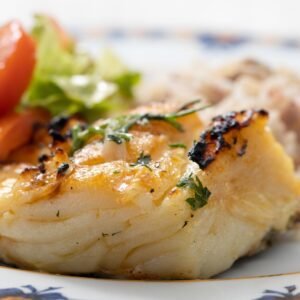
Fish and seafood can generally be good choices.
If watching your cholesterol, here are a few considerations:
- Most fish are low in saturated fat and high in heart-healthy omega-3 fatty acids, making them beneficial for cardiovascular health. The American Heart Association recommends eating at least two servings of fish per week, especially fatty fish rich in omega-3s like salmon, mackerel, herring, and sardines.
- While fish does contain some cholesterol, it is typically lower than other animal protein sources like chicken or beef.
- The cholesterol content in fish is generally outweighed by its heart-healthy benefits. According to Dr. Paul Mason in the above video, you need not worry about this cholesterol in fish and seafood.
- Some seafood, like squid and shrimp, are higher in cholesterol than others. For example, a 3.5 oz serving of raw squid contains 231 mg of cholesterol, while the same amount of shrimp has 194 mg. However, these can still be included in moderation as part of a healthy diet, if you feel this may be a concern.
More Considerations:
- The cooking method is crucial. Healthier preparation methods include grilling, baking, broiling, or poaching, while deep frying should be avoided as it adds unhealthy fats to your diet.
- Fish like salmon, trout, sardines, and mackerel are particularly beneficial due to their high omega-3 content and relatively low cholesterol levels.
- Some studies suggest that even seafood higher in cholesterol, like shrimp, may still have an overall positive effect on cholesterol profiles by raising HDL (good) cholesterol more significantly than LDL (bad) cholesterol. This is substantiated by Dr. Paul Mason and other medical professionals.
- It’s important to be mindful of mercury content in some fish, especially for pregnant women and young children. Low-mercury options include salmon, sardines, trout, and canned light tuna.
How Should You Choose Fish And Seafood At The Supermarket?
Selecting the freshest and highest quality fish and seafood at the supermarket can be a daunting task, especially with the wide variety of options available. However, with a few simple tips and tricks, you can ensure that you bring home the best catch every time.
From understanding what to look for in terms of appearance and smell to knowing how to properly handle and store your seafood, these guidelines will help you navigate the seafood aisle with confidence and make informed choices that will enhance your culinary creations.
Here are some key tips to help you make the best selections:
Fish:
Visual Inspection:
- Eyes: Look for clear, bright, and slightly bulging eyes. Cloudy or sunken eyes indicate the fish is not fresh.
- Gills: They should be bright red or pink and moist, not brown or faded
- Scales and Skin: The skin should have a metallic shine, and the scales should be firmly attached and intact. Dull or discolored spots are a sign of aging.
- Flesh: The flesh should be firm and spring back when pressed. Avoid fish with soft, mushy flesh or any dark or dry spots.
Smell: Fresh fish should have a mild, sea-breeze aroma. A strong fishy smell indicates the fish is no longer fresh.
Storage: Ensure the fish is stored on a bed of crushed ice and that the surrounding area is clean and free from fish parts or pooling liquids.
Seafood:
Lobsters, Crabs, and Other Living Seafood: They should be alive and active. Avoid any that are listless or dead.
Shellfish (Clams, Mussels, etc.): The shells should be tightly closed or close quickly when tapped. Open shells that do not close indicate the shellfish are dead and should be avoided.
Shrimp:
- Look for a shiny, wet appearance with tight scales. They should not have any odor.
General Tips:
Fresh vs. Frozen:
- Frozen seafood can be a good option, especially if you live far from the coast. Look for vacuum-sealed packages or those labeled as “flash frozen” to ensure quality.
- Some fish, like Chilean Sea Bass, are often sold frozen due to their origin.
Local and Sustainable Choices:
- Whenever possible, choose locally sourced fish to ensure freshness. Look for labels indicating the fish was caught in countries with good fishing management practices, such as the USA, Canada, Iceland, or New Zealand.
Avoid Certain Shellfish:
- Unless you have access to a high-quality supermarket, avoid buying fresh clams, oysters, mussels, or lobsters, as their quality can degrade quickly when transported long distances.
Value-Added Seafood:
- Consider smoked or canned fish, which travel well and can be high-quality options. Look for products from reputable sources.
What Are The Best Non-Alcoholic White Wines To Pair With Fish and Seafood?

When it comes to pairing non-alcoholic white wines with fish and seafood, the key is to focus on complementing the taste sensations first, and then the flavors of your dish. Whether you’re serving delicate fish or rich shellfish, there’s a perfect non-alcoholic white wine to enhance your meal.
Here’s a better approach to selecting the right pairing:
Focus on Wine Style First:
The wine’s style represents its taste sensations. The five taste sensations are sour (tangy), salty, sweet, bitter, and umami. Rather than immediately zeroing in on specific grape varieties and its flavor sensations, it’s more effective to consider the overall style of the non-alcoholic wine.
This approach, often referred to as “style before grape,” allows for a broader range of pairing options and can lead to more successful matches.
Wine styles to consider include:
- Crisp, dry white (light with bright acidity)
- Medium-Bodied White (fruit forward with balanced acidity, more weight but not as tangy as crisp, dry white. Weight is a mouth feel.
- Off-Dry White (balanced acidity with sweetness and some weight)
- Full-bodied and rich white (more fuller bodied with creamy mouthfeel, perhaps more eather, oaky flavors balanced with fruit)
Matching Wine Styles to Seafood:
Once you’ve identified the appropriate wine style for your seafood dish, you can then explore various non-alcoholic white wines within that category.
Here are some examples:
- For light, delicate fish (e.g., sole, tilapia): Choose a crisp, dry white wine. The wine’s light body will marry well to the delicate nature of the fish. Tanginess (acidity) is the predominant taste sensation you consider when pairing this wine with food.
- For fatty fish (e.g., salmon, tuna): Opt for a medium-bodied, fruity white wine. The wine’s bigger body will partner with the fattiness in the fish. Tanginess (acidity) and weight are the predominant taste sensations you consider when pairing this wine with food.
More examples:
- For spicy or aromatic seafood preparations like curries: Try an off-dry white. The wine’s perceived sweetness (or added sweetness) nicely offsets the heat and spice. The greater the heat and spice, the more sweetness required in the wine. Sweetness in the predominant taste sensation.
- For rich shellfish dishes: Consider a fuller-bodied, rich white wine. Fuller bodied whites have more weight and texture and therefore can stand up to the rich character in shellfish like crab and lobster. The wine’s weight (mouthfeel) is its more predominant taste sensation.
Selecting Specific Wines:
After determining the ideal wine style, you can explore non-alcoholic white wines made from different grape varieties that fit that profile. For instance:
- Crisp, dry white winet: Non-alcoholic Sauvignon Blanc or Pinot Grigio or dry Riesling
- Medium-bodied white: Alcohol-free stainless steel fermented Chardonnay
- Off-Dry White: Zero Alcohol Riesling with hint of sweetness
- Full-bodied and rich: Non-alcoholic oak aged Chardonnay
By following this “style before grape” approach, you’ll have a wider selection of non-alcoholic white wines to choose from, increasing your chances of finding the perfect complement to your seafood dish.
How Does Non-Alcoholic White Wine Compare To Regular White Wine When Pairing With Fish Dishes?
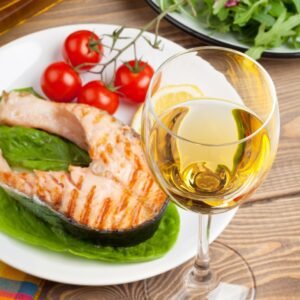
Non-alcoholic white wine can be paired with fish and seafood dishes in very similar ways to regular white wine. The good news is that non-alcoholic white wine is healthier and generally lower in calories due to the lack of alcohol. The lack of alcohol in NA white wine does alter the wine’s texture and in some cases flavor.
Alcohol adds weight. So, generally non-alcoholic white wine is not as big and as full-bodied as regular wine.
Winemakers due compensate for this by adding other ingredients to the wine, such as glycerol, which increases body and sometimes sweetness to balance the fruit. Glycerol is a carb (sugar alcohol), not a sugar. It’s important that you choose an NA white wine low in sugar for your health and/or your Keto diet or low-carb lifestyle.
After considering the sugar-content, here are some other considerations.
- Flavor profiles: Non-alcoholic white wines retain many of the same flavor characteristics as their alcoholic counterparts, including acidity, fruitiness, oakiness, earthiness, and minerality. This allows for similar pairing principles to be applied.
- Acidity: Like regular white wines, non-alcoholic versions with higher acidity (such as Sauvignon Blanc) pair well with fish or seafood highlighting acidity from fresh lemon, fresh lime, sugar-free rice vinegar, etc. The acidity helps cut through the richness of the fish.
- Lighter pairings: Non-alcoholic white wines are particularly well-suited for lighter fish dishes, just like regular white wines. They complement delicate flavors without overpowering them.
- Seafood versatility: Non-alcoholic white wine pairs excellently with a wide range of fish and seafood, including shellfish.
More Considerations:
- Chilling: Non-alcoholic white wines should be served chilled, to enhance their refreshing qualities when paired with fish. I suggest putting your wine in the refrigerator for at least an hour. Remember, the coldness can mute the nose of the wine.
- Mouthfeel: As mentioned above, non-alcoholic wines may have a slightly different mouthfeel due to the absence of alcohol, but this generally doesn’t significantly impact food pairing potential.
- Specific pairings: Many of the same pairing recommendations apply. For example, non-alcoholic Sauvignon Blanc pairs well with dishes like grilled lemon herb shrimp or ceviche, just as its alcoholic counterpart would. The reason? You’re pairing the wine’s predominant taste sensation called acidity with the acidity in the lemon herb seasoning.
- ONES Sparkling Wines are my favorites because they are zero carbs and zero sugar. So, they are ideal for going into or maintaining Ketosis or to incorporate into your low-carb lifestyle. (Click this link for a 10% discount on ALL Ones Sparkling Wines)
Can Non-Alcoholic White Wine Enhance The Flavor Of Fish and Seafood Like Traditional Wine Does?

Non-alcoholic white wine can enhance the flavor of seafood dishes, though not exactly in the same way as traditional wine.
Here are some key points:
- Acidity and brightness: Non-alcoholic white wine can provide acidity and brightness to seafood dishes, similar to regular wine. This helps balance rich flavors and can enhance the overall taste profile.
- Flavor complexity: While non-alcoholic wines may lack some of the depth of regular wines due to the lack of alcohol, they can still add subtle flavor notes that complement seafood. Many non-alcoholic whites have fruity, floral, or mineral characteristics that pair well with fish and shellfish.
- Other flavors: Or, you can choose a fuller-bodied Chardonnay with oak aging to partner with cedar planked salmon. The wine’s body will pair with the fattiness of this fish. The wine’s toasty notes will complement the smokiness from the cedar flavors.
- Cooking applications: Non-alcoholic white wine can be used in cooking seafood dishes as a substitute for regular wine. It works well in poaching liquids, sauces, and marinades. Just make sure the alcohol free white wine is low in sugar. Otherwise you’ll be adding sweetness to the resulting dish that also increases your carb count for the day.
More Points:
- Customization options: To your dish, add small amounts of complementary ingredients like lemon juice, herbs, or a splash of sugar-free rice or white balsamic vinegar. Stay away from white vinegar. It’s too acidic to pair with wine.
- Pairing considerations: When using non-alcoholic white wine as a beverage pairing with seafood, consider options that have crisp, refreshing qualities similar to traditional white wines like Sauvignon Blanc or Pinot Grigio.
- Pair weight: For fatty fish like salmon or tuna, make sure your non-alcoholic white has enough weight to match. If you want to pair salmon or tuna with a light, crisp white wine then make sure you add more lemon or lime to the fish to create that bridge of harmony.
- Texture enhancement: While non-alcoholic white wine won’t tenderize proteins in the same way as alcoholic wine, it can still contribute to the overall texture and mouthfeel of seafood dishes when used in cooking.
To get the most out of your pairing:
- Choose high-quality non-alcoholic wines specifically crafted to mimic traditional wine flavors.
- Experiment with different brands to find ones that are lowest in sugar and best complement your seafood dishes. Find the wines you like.
- Consider adding small amounts of complementary ingredients to enhance the flavor profile when cooking. As mentioned, you can use lemon and lime juice to create more harmony within the pairing.
- If you’re looking for an ideal fish or seafood dish to pair with your favorite wine free of alcohol I recommend ONES Sparkling Wines. With zero carbs and zero alcohol and its low calorie count per glass you can enjoy the pairing without any extra carbs. (Click this link for a 10% discount on ALL Ones Sparkling Wines)
Are There Specific Non-Alcoholic White Wine Varieties That Complement Shellfish Better?

Yes, there are specific non-alcoholic white wine varieties that pair particularly well with shellfish.
Here are some recommendations:
White Wines:
- The Expedition Series Non-Alc Verdejo Sauvignon Blanc: 24 calories and 0g sugar per 100mL
- Sovi Chenin Blanc: 10 calories and 1.3g sugar per 100mL
- Edenvale Semillon Sauvignon Blanc: 8 calories and 1.6g sugar per 100mL
- Giesen Sauvignon Blanc: 12.5 calories and 1.75g sugar per 100mL
- Brochet Zero Organic Sauvignon Blanc: 8 calories and 1.8g sugar per 100mL
- Noughty Blanc De-alcoholised White Wine: 17 calories and 2.0g sugar per 100mL
- Princess Alternativa Bianco Dry Non-Alcoholic White Wine: 17 calories and 2.6g sugar per 100mL
- Edanvale Pinot Gris: 13 calories and 2.8g sugar per 100mL
- Lautus Chardonnay: 20 calories and 2.8g sugar per 100mL
- Edenvale The Spanish Expedition Series Verdejo Sauvignon Blanc: 17 calories and 3.6g sugar per 100mL
- Edenvale Non-Alc Chardonnay: 18 calories and 3.9g sugar per 100mL
- Leitz Eins Zwei Non-Alc Riesling: 24 calories and 4.9g sugar per 100mL
- Edenvale Blanc de Blanc Premium Reserve: 23 calories and 5.2g sugar per 100mL
- Luminara Napa Valley Chardonnay Dealcoholized: 18 calories and 5.2g sugar per 100mL
- Le Petit Beret Virgin Sauvignon Blanc: 25 calories and 6.2g sugar per 100mL
More Recommendations:
- Drink whatever non alcoholic white wine you like (as long as it’s bone dry) and don’t worry about pairing the wine to the dish. Enjoy your wine the way you like it. If you like to create harmony between the wine and the food, you’ll need some sweetness in the wine to complement the shellfish. Add a pinch of monk fruit sweetener to your glass.
- Non-alcoholic sparkling white wines, like Le Petit Beret Sparkling Blanc de Blanc or ONES Sparkling White can be a great match for shellfish, particularly for special occasions or as an aperitif. (Click this link for a 10% discount on Ones Sparkling White.)
- The Brochet Zero Sauvignon Blanc is described as having a juicy profile with notes of gooseberry and passion fruit, making it an excellent pairing for oysters and other shellfish.
What Keto Vegetables Complement Fish and Seafood And A Zero Alcohol White Wine?

Several keto-friendly vegetables pair excellently with fish and seafood and with a non-alcoholic white wine.
Here are some great options:
- Asparagus: Its slightly bitter, grassy flavor complements shellfish well and pairs beautifully with crisp white wines. Freshly squeezed lemon juice complements grilled asparagus and fish and seafood, thus harmonizing with the acidity in zero alcohol white wine.
- Zucchini: Lightly sautéed or spiralized into “zoodles,” zucchini offers a mild flavor that won’t overpower the delicate taste of shellfish. Zucchini tastes fabulous with a splash of lemon juice. Zucchini Tapas can also be served as a side dish with your fish or seafood.
- Cauliflower: Roasted or mashed cauliflower can serve as a low-carb alternative to traditional starches and pairs nicely with both shellfish and NA white wine.
- Spinach: Sautéed spinach with garlic is a classic accompaniment to shellfish dishes.
- Brussels sprouts: Roasted or sautéed Brussels sprouts provide a nutty flavor that complements shellfish and white wine. Smashed Brussels Sprouts with Parmesan also complement non alcoholic white wine paired with fish or seafood.
- Saltiness: The saltiness of the cheese nicely offsets the acidity in the wine and lemony flavor added to the fish or seafood. So yes, add lemon! Here’s another dish incorporating salmon and Brussels sprouts.
More Veggies to Consider:
- Artichokes: Their unique flavor profile works well with shellfish and crisp white wines, though they should be prepared without breading to remain keto-friendly. Again be generous with the freshly squeezed lemon juice.
- Green beans: Lightly steamed or sautéed green beans offer a fresh, crisp texture that pairs well with shellfish.
- Fennel: Fennel, with its distinctive anise-like flavor, can elevate shellfish and fish dishes while pairing beautifully with non-alcoholic white wines. Interestingly, fennel’s licorice notes complement the similar flavors found in star anise, a key component of Chinese 5 spice powder.
- Fennel a)This connection opens up exciting culinary possibilities. For a heavenly pairing, try seasoning your seafood with Chinese 5 spice powder and serving it alongside a non-alcoholic Riesling sweetened with a pinch of monkfruit sweetener.
- Fennel b): This combination creates a harmonious blend where the fennel-infused seafood sings in concert with the subtly sweet wine. The licorice flavor of fennel complements the complex spices, while the wine’s sweetness marries well with the fennel and offsets the spiciness of the Chinese 5 spice.
What Are The Best Low-Sugar Non-Alcoholic White Wines For Fish and Seafood?
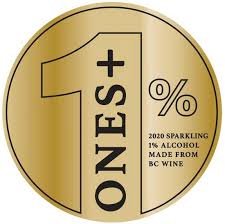
Here are some NA white wines low in sugar to consider:
- ONES Sparkling White: 0 g /oz (Click this link for a 10% discount on Ones Sparkling White.)
- Silhouet – Sparkling Chardonnay: 0 g/oz
- Giesen Sauvignon Blanc: 0.4 g/oz
- Brochet Zero Sauvignon Blanc: 0.59 g/oz
- Casa Emma – Zeero Italian White Blend: 0.59 g/oz (Click this link for a 10% discount on Ones Sparkling White.)
- Oddbird Low Intervention 2 Organic White: 0.59 g/oz
- Edenvale – Premium Reserve Selection – Semillion Sauvignon Blanc: 0.59 g/oz
- Joyus Sparkling White: 0.74 g/oz
- Le Petit Beret Sparkling Blanc de Blanc: 0.89 g/oz
- Lautus Chardonnay: 1.22 g/oz
*Note: I have not tried all of these wines. This is a list of the most recognized low-sugar non alcoholic white wines I’ve discovered. You’ll have to research the wines for yourself to choose one that you will enjoy.
How Do You Choose A Non-Alcoholic White Wine For A Seafood Dinner Party?

Non-alcoholic white wines for seafood dinner party, consider the following:
- Flavor profile: Look for a non-alcoholic white wine that complements seafood, such as one with crisp, citrusy notes or a light, refreshing taste. Options like dealcoholized Sauvignon Blanc or Chardonnay often work well.
- Quality: Choose a high-quality non-alcoholic wine that you would enjoy drinking on its own. This ensures a better flavor when paired with your seafood dishes. Quality does not necessarily mean higher cost.
- Acidity balance: For older guests who may be sensitive to acidity, opt for a non-alcoholic white wine that has been crafted with a natural sweetener or consider adding a pinch of monk fruit sweetener to balance the acidity. This will help your older guests enjoy the wine without discomfort.
- Low sugar content: Select a non-alcoholic wine that is low in sugar to keep the overall carbohydrate and sugar content of the meal down. This is especially important when considering the carbs from sauces and vegetables in your seafood dishes. ONES Sparkling wiines have zero carbs and zero sugar. (Click this link for a 10% discount on Ones Sparkling White.)
More Factors To Consider:
- Pairing compatibility: Consider the specific seafood dishes you’ll be serving. A light, crisp non-alcoholic white wine often pairs well with delicate fish, while a fuller-bodied option might complement richer seafood like lobster or crab.
- Carbs vs Sugar: Sometimes you’ll notice that the non alcoholic white wine will have zero to very low sugar but higher carbs. This can mean that the winemaker added glycerol (a sugar alcohol) to beef up the weight and mouthfeel of the wine.
- Carbs From Glycerol: If the carbs come from glycerol, you’ll want to consider half of them in your macro count. So, a non-alcoholic white with zero sugar and 10 grams of carbs should be counted as 5 net carbs per serving. The nutritional label will tell you how many ounces/mL in one serving.
Even More Factors To Consider:
- Healthy fats: If using butter in your seafood preparations, opt for grass-fed butter to reduce saturated fat content and increase healthy Omega-3 fatty acids.
- Brand reputation: Look for reputable brands known for producing high-quality non-alcoholic wines. See the list above.
- Serving temperature: Chill the non-alcoholic white wine properly before serving to enhance its refreshing qualities and complement the seafood. I like to put my white into the refrigerator for at least an hour before serving. As already mentioned, keep in mind that the coldness can mute the aromas in the wine. So be careful.
- Presentation: Consider serving the non-alcoholic wine in elegant glassware to elevate the dining experience for all guests. This does not mean the glasses have to be expensive. They just need to be the right shape — narrow at the rim to concentrate the nose and so that the wine falls onto the whole palate.
- Cost: Serving seafood for a dinner party is already an expensive endeavor. Also you may want a different non alcoholic wine to pair with each course. So serve a less expensive NA white wine for the hors d’oeuvres and save your budget to feature a more expensive non-alcoholic white wine to marry to the main fish or seafood entree.
Are There Any Non-Alcoholic Sparkling White Wines That Go Well With Oysters Or Other Raw Seafood?

What Are The Flavor Profiles Of Non-Alcoholic White Wines That Work Best With Different Types Of Fish?
Light, Fruity NA Whites:
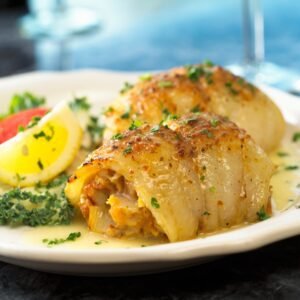
- Feature crisp, dry Sauvignon Blanc
- Example: ONES Sparkling White or Le Petit Beret Sparkling Blanc de Blanc (Click this link for a 10% discount on Ones Sparkling White.)
Here are some fresh, low-glycemic sole, cod, and tilapia dishes incorporating low-glycemic ingredients:
- Lemon Herb Baked Sole:
Season sole fillets with lemon zest, fresh herbs like parsley and dill, and bake until flaky. Serve with a squeeze of fresh lemon juice. - Citrus-Glazed Cod:
Brush cod fillets with a glaze made from fresh lime juice, a small amount of honey, and ginger. Grill or bake until cooked through. - Tilapia with Lemon Butter Sauce:
Pan-fry tilapia fillets and top with a light sauce made from lemon juice, a small amount of butter, and capers. - Sole Meunière:
Lightly dust sole fillets with almond flour, pan-fry in clarified butter, and finish with a squeeze of lemon juice and chopped parsley.
More Dishes To Consider:
- Lime and Cilantro Cod:
Season cod fillets with lime zest, cilantro, and garlic. Bake or grill and serve with lime wedges. - Herb-Crusted Tilapia:
Coat tilapia fillets in a mixture of almond flour, dried herbs, and lemon zest. Pan-fry until golden and serve with lemon slices. - Lemon Garlic Sole Packets:
Place sole fillets on parchment paper, top with sliced lemon, minced garlic, and herbs. Fold into packets and bake for a light, flavorful meal. - Grilled Lime Cod Skewers:
Cut cod into chunks, marinate in lime juice and spices, then grill on skewers for a fresh, low-carb option.
Off-Dry NA Whites:

- Feature non-alcoholic off-dry Rieslings
- Example: Carl Jung Riesling Dealcoholized White. This wine has 3.1 grams of sugar per 100 mL.
Here are some fresh, low glycemic salmon and tuna dishes incorporating low-glycemic ingredients:
- Seared Tuna with Tomato and White Bean Side Dish:
Quickly sear tuna steaks and serve with a side of white beans, diced tomatoes, herbs, and spices. This dish is low carb and Pesco Mediterranean diet-friendly. - Tuna Salad with Fresh Vegetables:
Make a light tuna salad using canned tuna, diced celery, red onion, fresh herbs like parsley, and diced tomatoes. Serve in lettuce wraps or on top of mixed greens for a low glycemic meal. - Salmon with Tomato-Avocado Salsa:
Grill or bake salmon fillets and top with a fresh salsa made from diced tomatoes, avocado (a low glycemic fruit), red onion, cilantro, and lime juice.
More Dishes To Consider:
- Tuna Poke Bowl:
Create a poke bowl with sushi-grade tuna, diced cucumber, cherry tomatoes, and low glycemic fruits like berries or kiwi. Serve over cauliflower rice for a lower carb option. - Grilled Salmon Skewers with Cherry Tomatoes:
Thread salmon chunks and cherry tomatoes onto skewers, brush with olive oil and herbs, then grill for a quick and healthy meal. - Tuna-Stuffed Tomatoes:
Hollow out large tomatoes and fill with a mixture of tuna, diced vegetables, herbs, and a small amount of Greek yogurt for creaminess. - Salmon and Strawberry Salad:
Combine grilled salmon with mixed greens, sliced strawberries (a low glycemic fruit), and a light vinaigrette for a refreshing summer meal
Big, Fat NA Whites:
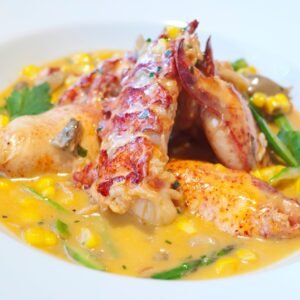
Fuller-bodied non-alcoholic white wines pair well with rich, creamy fish dishes:
- Feature more full-bodied, creamy or buttery Chardonnay
- Example: Luminara Alcohol Removed Chardonnay offers warm buttery notes from oak aging, complementing richer seafood (5.2 carbs, 2.5 sugars per 100 mL).
Here are some fresh, low-glycemic lobster, crab, scallops, shrimp, halibut, and cod incorporating low-glycemic ingredients:
- Butter-Poached Lobster Tails:
Gently poach lobster tails in melted grass-fed butter infused with herbs like thyme and tarragon. Serve with a side of steamed non-starchy vegetables.
Fill large mushroom caps with a mixture of crab meat, grass-fed butter, herbs, and a small amount of almond flour. Bake tails until golden. - Garlic Butter Scallops:
Sear sea scallops in grass-fed butter and garlic. Finish with a squeeze of lemon juice and fresh parsley. - Low-Carb Crab Quiche:
Create a crustless quiche using crab meat, eggs, heavy cream, and grass-fed butter. Season with Old Bay and herbs for added flavor. - Lobster Bisque:
Make a rich, creamy bisque using lobster stock, heavy cream, and grass-fed butter. Use pureed cauliflower to thicken instead of flour for a low-carb version.
More Dishes To Consider:
- Butter-Basted Halibut:
Pan-sear halibut fillets and baste with grass-fed butter, garlic, and fresh herbs. Serve with a side of roasted low-carb vegetables. - Crab-Stuffed Avocados:
Mix crab meat with a small amount of grass-fed butter, lemon juice, and herbs. Stuff into halved avocados for a low-carb, high-fat dish. - Lobster Cauliflower “Risotto”:
Create a low-carb risotto using riced cauliflower, lobster meat, grass-fed butter, and Parmesan cheese. - Butter-Poached Shrimp:
Gently poach large shrimp in grass-fed butter infused with garlic and lemon zest. Serve over zucchini noodles. - Crab-Topped Cod:
Bake cod fillets and top with a mixture of crab meat, grass-fed butter, and herbs.
What Are Other Keto Low-Carb Fish and Seafood Dishes Worth Trying?
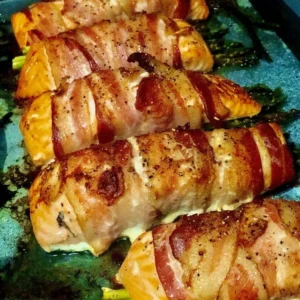
- Bacon-Wrapped Salmon Asparagus (Heart Healthy)
- Tuna Avocado Blackberry Salad (Hearty Healthy)
- Tilapia Parmesan (Heart Healthy)
- Cajun Salmon (Heart Healthy)
- Maple Lemon Salmon (Heart Healthy)
- Salmon with Lemon, Honey, Thyme
- Smoked Salmon Rolls (Heart Healthy)
I’m excited to share with you my good news… Introducing Sinless Sourdough – Where Ancient Art Meets Low Carb Science!

Stop sacrificing flavor for your health goals – our authentic heritage sourdough starters have been specially adapted for low-carb baking
Limited Time Offer: 82% OFF – Only $19.99 Today (Regular Price: $113)
Sinless Sourdough™ Starter + Membership Includes:
- Authentic Heritage Starter shipped directly to your door
- Complete Video Training Library showing you step-by-step how to create:
- Artisan boules and batards with delicious crispy crust and soft interior
- Crisp French baguettes for the dinner table or as crostini
- Chewy Montreal-style bagels that won’t spike your blood sugar
- German street pretzels with authentic alkaline crust
- Convenient everyday bread machine loaves for sandwiches
- Supportive Community of fellow low-carb bakers to share your journey
- Extensive Recipe Collection for using sourdough discard (nothing goes to waste!)
“After years of disappointing low-carb bread experiments, Sinless Sourdough changed everything. I’m enjoying real sourdough again without the carb guilt!” — Maria T.
“My family can’t tell the difference between these loaves and traditional bread. The starter is incredibly active and the results are amazing!” — James K.
🔥 CLAIM YOUR MEMBERSHIP NOW 🔥
Use code: Sinless82 at checkout Offer expires soon! Limited starter batches available
82% OFF TODAY FOR MEMBERSHIP
Sinless Sourdough™ Heritage Collection

Transform your low-carb baking with our Global Heritage Collection featuring unique starters from historic moments across continents. Each brings its own personality and flavor profile while maintaining excellent nutritional values—just 1g net carbs compared to 8-10g in traditional starters.
Choose from:
- 1849 San Francisco Gold Rush – Authentic California sourdough character
- 1898 Yukon Gold Rush – Subtle tanginess with notes of butter
- 1847 Oregon Trail – Rustic character with exceptional rise
- 1000-Year-Old Italian Monastery – Delicate complexity with ancient lineage
Each starter connects you to centuries of baking tradition while supporting your modern low-carb lifestyle. Our proprietary transformation process preserves their unique characteristics while adapting them for health-conscious baking.
When you purchase any Sinless Sourdough™ starter, you receive our comprehensive onboarding sequence teaching you exactly how to revive your dehydrated starter for perfect low-carb, high-protein results every time.
Click the link:
SINLESS STARTER SHOP
🍞 START YOUR LOW-CARB SOURDOUGH JOURNEY TODAY! 🍞
Medical Studies and Reviews on Sourdough
Here they are:
Does Sourdough Bread Provide Clinically Relevant Health Benefits?
The Sourdough Microbiome
Study Of Sourdough Starter Microbiome To Boost Bread Quality and Safety
Sourdough Microbiome Comparison and Benefits
Effect of Breadmaking Process on In Vitro Gut Microbiota Parameters in Irritable Bowel Syndrome
Nutritional Benefits of Sourdough; Systematic Review
Sourdough-leavened bread improves postprandial glucose and insulin plasma levels in subjects with impaired glucose tolerance
Use of sourdough in low FODMAP baking
A novel formulation of sourdough bread enriched with plant sterols and high-fibre inulin improves metabolic control in type 2 diabetes
Impact of sourdough fermentation on appetite and postprandial metabolic responses – a randomised cross-over trial with whole grain rye crispbread
Disclaimer:
All information provided on this website regarding the health benefits of sourdough low carb bread is intended for educational purposes only. The content presented is not meant to be taken as specific medical advice for any individual. It should not be considered a replacement for professional medical guidance or treatment. If you have any health concerns, especially related to diabetes, pre-diabetes, or any other medical condition, please consult with a healthcare professional immediately.
- UNUSUAL KETO INSTANT POT RECIPES FOR 2025 - April 27, 2025
- Boost Your Keto Diet with These Non-Alcoholic Wine Hacks - April 27, 2025
- 10 Unique & Healthy Mocktails You Need to Try - April 27, 2025


